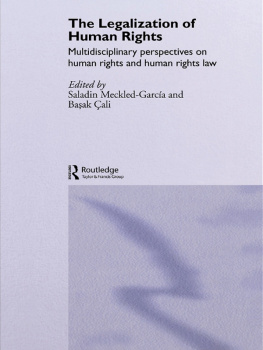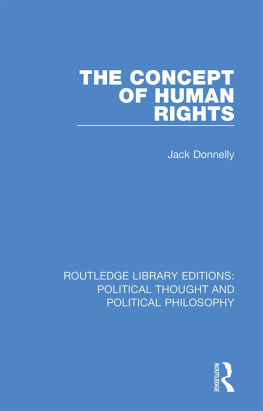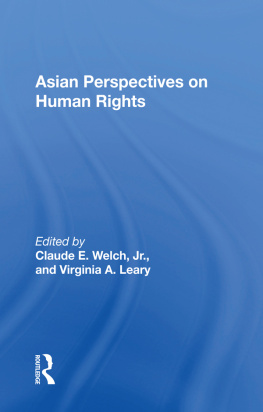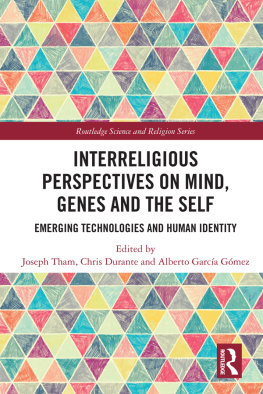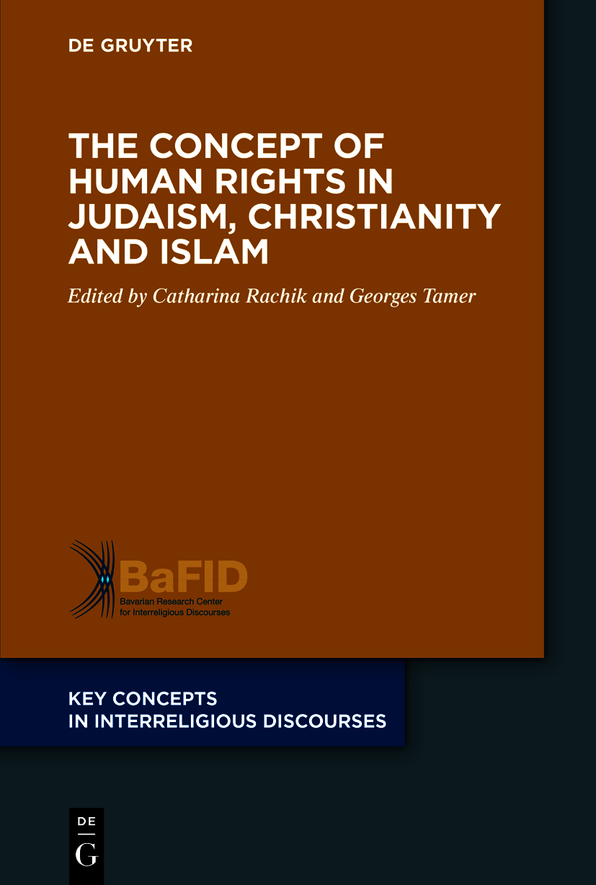The Deutsche Nationalbibliothek lists this publication in the Deutsche Nationalbibliografie; detailed bibliographic data are available on the Internet at http://dnb.dnb.de.
Exploring a Multifaceted Relationship
Since World War II, human rights have become the central reference of an international normative consensus. The preamble starts with the due recognition of the inherent dignity and of the equal and inalienable rights of all members of the human family, thus setting the tone for the rest of the document. Article 1 summarizes the normative profile of human rights by proclaiming: All human beings are born free and equal in dignity and rights. They are endowed with reason and conscience and should act towards one another in a spirit of brotherhood. The remaining articles spell out a broad range of specific rights, which include civil and political as well as economic, social and cultural rights. The right to freedom of religion or belief (article 18) is of particular significance for the present chapter. It reads as follows: Everyone has the right to freedom of thought, conscience and religion; this right includes freedom to change his religion or belief, and freedom, either alone or in community with others and in public or private, to manifest his religion or belief in teaching, practice, worship and observance. In the subsequent decades UDHR served as the main reference document for the development of legally binding human rights conventions, including the 1966 International Covenant on Civil and Political Rights, which in article 18 confirms and further specifies the right to freedom of religion or belief.
While human rights are immediately binding upon States, which under international law are supposed to function as formal guarantors of these rights, their underlying normative ethos permeates societal groups as well, including religious communities. In particular, if religious communities wish to exercise an impact on public political life, they must clarify their own attitude towards human rights. This presents a number of challenges, which religious communities have to face. As I will point out, the liberating spirit does not always fit easily with all elements of the traditional ethical teachings of many religions. The need for clarification, however, also rests on the side of human rights. Obviously, the normative consensus that human rights represent remains precarious. Apart from the proverbial cleavage between normative aspirations and stubborn realities, which has always existed, the very idea of human rights has recently come under renewed pressure. Whereas in the past, criticism of human rights often came from the political left, objections against human rights nowadays often manifest themselves in the language of traditional religious values. This is one of the reasons, why it is also in the interest of human rights to clarify the relationship towards religion.
In this introduction, I first describe some prima facie affinities and conflicts between the human rights approach and religions (sections 2 and 3). In order to explore that relationship more systematically, I then analyze one of the core functions that define the human rights approach, namely shaping peaceful coexistence of people of different religious or belief-related orientations by empowering human beings (section 4). This empowerment function explains the specific normative authority that human rights claim, including when dealing with religious communities, as well as certain limitations inherent in the human rights approach. The introduction concludes with describing freedom of religion or belief as a custodian right against the danger of turning human rights into an object of idolatry (section 5).
Affinities
Human rights language abounds with religious ideas, metaphors and concepts. The 1776 Declaration of Independence invokes God as the ultimate guarantor of fundamental rights: We hold these truths to be self-evident, that all men are created equal, that they are endowed by their Creator with certain unalienable rights [].
The peculiar closeness to religious language is no coincidence. Notions like inalienability or inviolability illustrate that human rights exceed the usual pragmatic functions of law. They touch upon existential questions of human life: the inherent dignity of every person, the unconditioned conditions of any normative interaction, the self-understanding of human beings as responsible agents, the ultimate foundations of morality and law, i.e. issues that have also been a traditional domain of various religions. Human rights norms enjoy an elevated rank within the sphere of law. They are not rights like any rights, which people may possess or not possess, appreciate or ignore, acquire or abandon, because what is at stake in human rights is no less than the humanness of the human being. This warrants their qualification as inalienable rights. Some human rights standards, like the ban on torture or the prohibition of infringements into the persons inner nucleus of faith-formation, command an apodictic respect without any justifiable exceptions or limitations, even in situations of emergency. These and other prohibitions demarcate the red lines, which a State must never cross, regardless of the political circumstances. It is no coincidence that these prohibitions have been qualified as absolute norms, thus again carrying a predicate that seems to stem from the religious sphere.
One can describe the affinities between human rights and religion from the opposite angle. Some of the principles and concepts that define the human rights approach human dignity, justice, liberation and equality resonate profoundly within religious and philosophical traditions. Another famous Biblical reference is Israels escape from slavery. The exodus provides a powerful narrative, which already inspired the first generations of abolitionists in their fight against slave trade and slavery. Let my people go this refrain of a famous gospel song has become the banner of numerous liberation movements to the present day.
Such motives are not a monopoly of the Biblical tradition. The Qurn acknowledges mans role as Gods vicegerent (khalfa) on earth, thus ascribing to each individual human being a worth above any utilitarian calculation.
The possibilities to invoke substantial affinities between human rights and religions are manifold and accommodate a broad variety of religious traditions. Incidentally, it is not only religiously interested people who wish to demonstrate similarities between the ethos of various religions and modern standards of human rights; many human rights advocates, too, strive to solidify human rights norms further by invoking a broad normative consensus traceable to the authoritative scriptures and traditions of the world religions.
Conflicts
Those who postulate a harmonious relationship between human rights and religious traditions have to face a number of serious challenges, however. Gender-related rights are the most obvious area of conflict. The equality of men and women is deeply anchored in numerous human rights documents, starting with the


